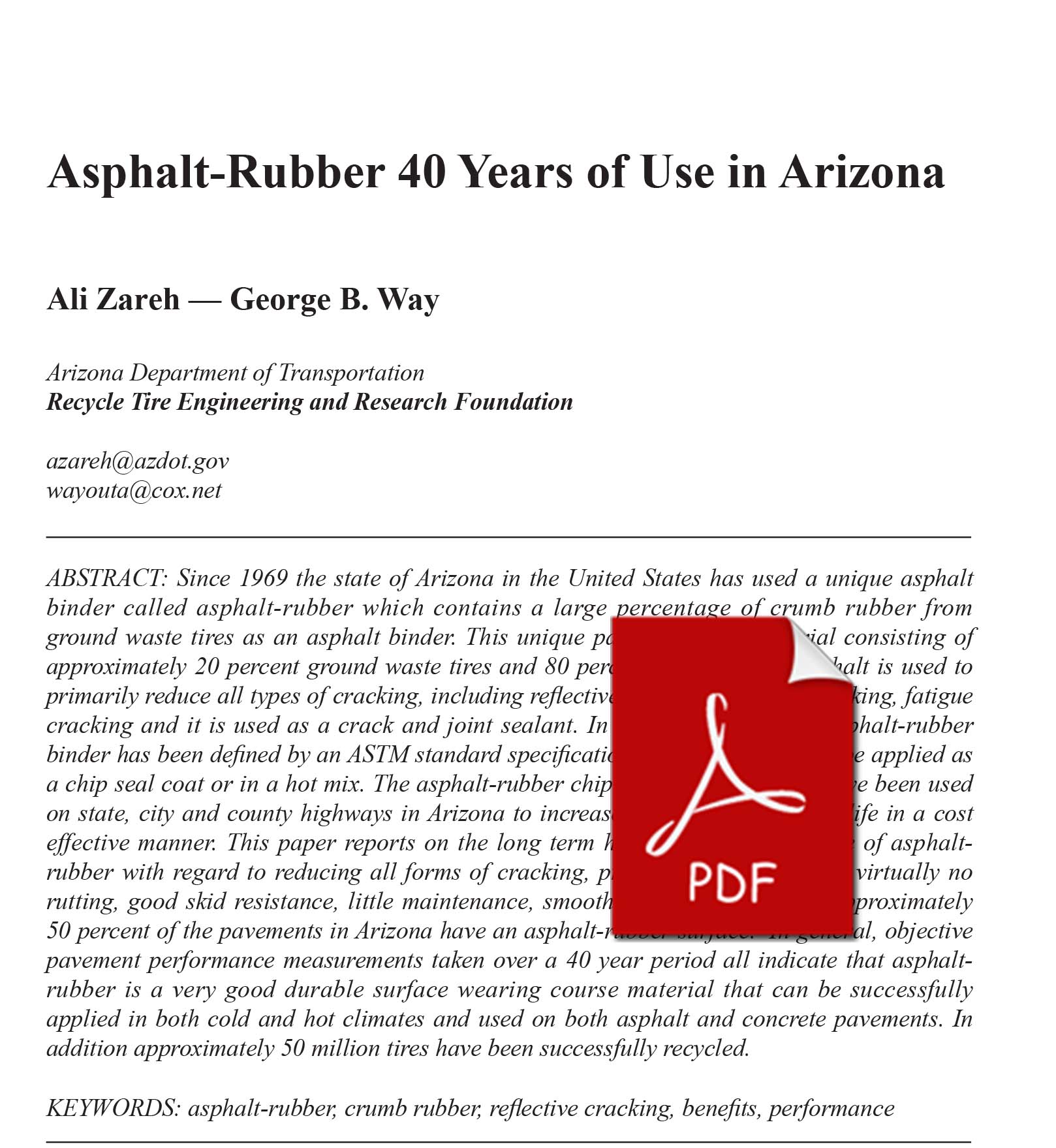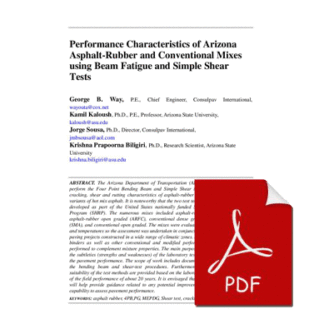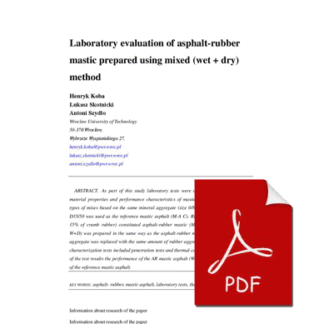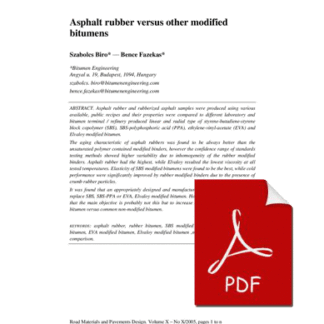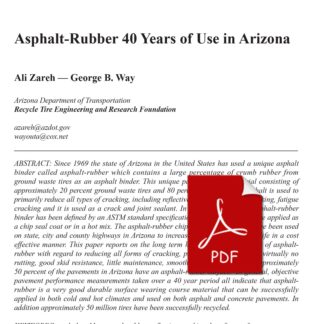Description
Since 1969 the state of Arizona in the United States has used a unique asphalt binder called asphalt-rubber which contains a large percentage of crumb rubber from ground waste tires as an asphalt binder. This unique paving asphalt material consisting of approximately 20 percent ground waste tires and 80 percent paving grade asphalt is used to primarily reduce all types of cracking, including reflective cracking, thermal cracking, fatigue
cracking and it is used as a crack and joint sealant. In addition since 1994 asphalt-rubber binder has been defined by an ASTM standard specification. Asphalt-rubber can be applied as a chip seal coat or in a hot mix. The asphalt-rubber chip seals and hot mixes have been used on state, city and county highways in Arizona to increase the pavement service life in a cost effective manner. This paper reports on the long term history and performance of asphaltrubber with regard to reducing all forms of cracking, providing a surface with virtually no rutting, good skid resistance, little maintenance, smooth ride and less noise. Approximately 50 percent of the pavements in Arizona have an asphalt-rubber surface. In general, objective pavement performance measurements taken over a 40 year period all indicate that asphaltrubber is a very good durable surface wearing course material that can be successfully
applied in both cold and hot climates and used on both asphalt and concrete pavements. In addition approximately 50 million tires have been successfully recycled.

